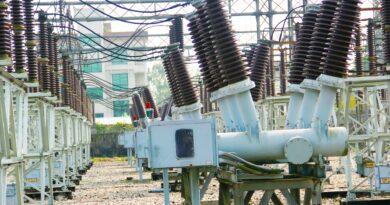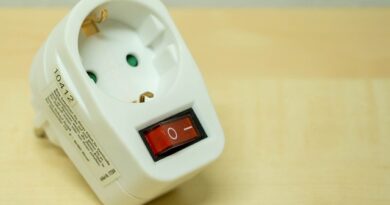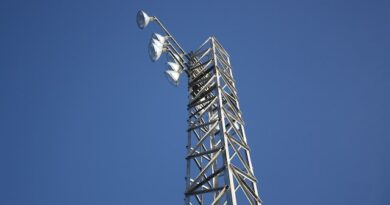The Shocking Truth: Common Electrical Hazards Uncovered in Safety Audits
Introduction
Welcome to our comprehensive guide on the common electrical hazards uncovered in safety audits. As experts in electrical safety and audit compliance, we understand the importance of identifying and mitigating potential risks. In this article, we will delve into the most frequently encountered electrical hazards, providing you with valuable insights to ensure the safety of your workplace and employees.
Electrical Hazard 1: Faulty Wiring
One of the most prevalent electrical hazards found during safety audits is faulty wiring. Outdated or damaged wiring systems can lead to numerous risks, including electrical shocks, fires, and equipment malfunctions. Faulty wiring can occur due to wear and tear, inadequate maintenance, or improper installation. These hazards are particularly common in older buildings or those with substandard electrical installations.
To prevent accidents related to faulty wiring, it is crucial to conduct regular electrical inspections and address any issues promptly. Engaging a certified electrician to assess your electrical systems ensures compliance with safety regulations and reduces the risk of potential electrical hazards.
Electrical Hazard 2: Overloaded Circuits
Overloaded circuits pose a significant threat in workplaces with high electrical demands. When electrical circuits are overwhelmed with excessive power consumption, they can overheat, leading to electrical fires. Common causes of overloaded circuits include connecting multiple high-power devices to a single outlet, using improper extension cords, or neglecting to distribute electrical loads evenly.
To prevent the risks associated with overloaded circuits, implement the following measures:
- Perform a Load Analysis: Determine the power requirements of your electrical equipment and distribute the load accordingly. Consider employing power management tools to monitor and regulate power consumption effectively.
- Avoid Daisy chaining: Do not connect extension cords or power strips to one another, as it can overload the circuit. Instead, use separate outlets or consider installing additional electrical circuits to accommodate the power demand.
- Educate Employees: Raise awareness among your employees about the dangers of overloaded circuits and the importance of responsible power usage. Encourage them to report any electrical abnormalities promptly.
Electrical Hazard 3: Inadequate Grounding
Inadequate grounding is a significant electrical hazard that can result in electrical shocks, electrocution, or equipment damage. Grounding provides a safe path for electrical currents to flow into the ground, preventing the buildup of excess charge. When grounding systems are improperly installed or maintained, the risk of electrical accidents increases significantly.
To ensure proper grounding and mitigate related hazards, consider the following guidelines:
- Inspect Grounding Systems: Regularly inspect your grounding systems to identify any signs of damage, corrosion, or loose connections. Any issues should be addressed immediately by a qualified electrician.
- Maintain Proper Bonding: Bond all metal components of your electrical system, including equipment, conduits, and enclosures, to ensure effective grounding. This helps prevent electrical surges and minimizes the risk of electrical hazards.
- Adhere to Electrical Codes: Familiarize yourself with local electrical codes and regulations to ensure compliance. Work with professionals who have in-depth knowledge of these codes to design, install, and maintain your electrical system correctly.
Electrical Hazard 4: Lack of Safety Training
A lack of proper safety training is a pervasive issue that contributes to electrical hazards in many workplaces. Employees who are unfamiliar with electrical safety practices may inadvertently expose themselves and others to risks. This lack of awareness can lead to accidents, injuries, and property damage.
To address this concern, it is essential to prioritize comprehensive safety training programs for all employees. These programs should cover:
- Electrical Safety Basics: Educate employees about the fundamentals of electrical safety, including proper handling of electrical equipment, recognizing warning signs, and reporting potential hazards.
- Emergency Procedures: Provide clear guidelines on how to respond in the event of an electrical emergency, such as power outages, electrical fires, or electrocution incidents. Conduct regular drills to reinforce these procedures.
- Risk Assessment and Prevention: Teach employees how to identify potential electrical hazards in the workplace and encourage them to report any concerns to the appropriate personnel. Promote a culture of safety and accountability.
Conclusion
In conclusion, addressing and mitigating common electrical hazards uncovered in safety audits is vital for maintaining a safe working environment. By proactively identifying and rectifying issues related to faulty wiring, overloaded circuits, inadequate grounding, and a lack of safety training, you can significantly reduce the risk of accidents, injuries, and property damage.
Remember, electrical safety should be an ongoing commitment, with regular audits and employee training programs to ensure continuous compliance. Prioritize the well-being of your workforce and safeguard your workplace against the shocking truth of electrical hazards.




